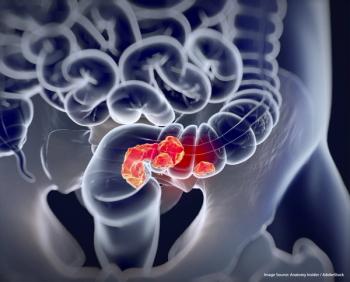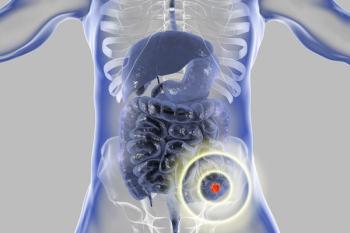
Tumor Location Prognostic for Outcomes Even After Multivariable Adjustment
The primary tumor location was an independent prognostic marker in patients with RAS wild-type metastatic colorectal cancer after multivariable adjustment.
The primary tumor location was an independent prognostic marker in patients with RAS wild-type metastatic colorectal cancer after adjusting for age, gender, synchronous/metachronous disease, consensus molecular subtype, and microsatellite instability and molecular status, according to the results of an analysis (abstract
“Tumor location is independently prognostic even when adjusted,” said researcher Alan P. Venook, MD, of the University of California San Francisco Helen Diller Family Comprehensive Cancer Center. “Tumor sidedness should be a stratification factor in studies of colon cancer until we can figure out the mechanism by which sidedness remains an independent prognostic variable.”
The CALGB/SWOG 80405 trial randomly assigned 1,137 patients with metastatic or advanced KRAS wild-type colorectal cancer to chemotherapy with FOLFIRI or FOLFOX plus cetuximab or bevacizumab. Venook previously presented results that showed no difference in progression-free or overall survival with the addition of bevacizumab or cetuximab to first-line FOLFOX or FOLFIRI.
In an initial analysis of left- compared with right-sidedness, the researchers determined primary tumor location in 782 patients; 472 had left primary and 256 had right primary. The median overall survival was 32.9 months for left-side primary compared with 19.6 months for right-side primary (P < .0001).
In this updated multivariable analysis, the researchers included age, race, gender, synchronous vs metachronous disease, and consensus molecular subtypes, as well as other mutational events such as BRAF, NRAS, KRAS, HRAS, and microsatellite instability status. In all, there were 291 tumors with KRAS, 393 with NRAS, 393 with BRAF, 378 with microsatellite instability, and 533 with consensus molecular subtypes.
Even after inclusion of all these factors, sidedness remained an independent prognostic marker, with a hazard ratio of 1.392 (95% CI, 1.032–1.878; P = .031).
Among the possible reasons for this difference, Venook suggested that the tumor burden of patients with tumors on the right side may be greater than the tumor burden of patients with cancer on the left side.
“This would be because the stool is liquid on the right, the lumen is wider and therefore takes a longer period of time for the mass to obstruct or cause symptomatology that leads to the diagnosis of colon cancer,” Venook noted.
The researchers therefore looked at possible indicators of tumor burden, including direct measurements such as lactate dehydrogenase and the number or volume of metastases, or indirect evidence such as leaving the primary tumor in place or if the goal of treatment was palliation.
There was no difference in lactate dehydrogenase, the number of metastatic sites, prior adjuvant therapy, primary in place at initiation of therapy, or intent of treatment across the cohorts for right- compared with left-sided tumors.
“Based on these data we feel there is no evidence in difference in tumor burden to explain the sidedness differential,” Venook said.
He noted that there are some ongoing studies that may further inform this difference in the future, including tumor DNA analysis with whole exome sequencing and tumor RNA analysis with RNAseq, evaluation of circulating cell-free tumor DNA, and hypermethylation.
Newsletter
Stay up to date on recent advances in the multidisciplinary approach to cancer.






















































































